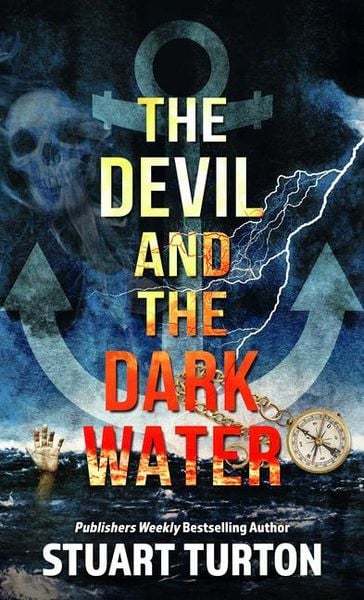It’s no secret AI can operate as a powerful research tool, especially when requiring ‘fuzzy’ searches. ‘Fuzzy logic’ is a computer term referring to imprecise inputs or output. Digital computers like exactitude. In practice, ‘approximately’, ‘about’, ‘almost’, and ‘nearly’ are anathema to traditional programming.
Until now.
“Oh please, ChatGPT / Copilot / Gemini / Grok / LLaMA / Claude / Deep Seek, please help me identify a summer television series with a mystery theme broadcast on ABC, CBS, or NBC in the late 1970s or maybe 1980s…”
Google and Bing won’t help much but a well-phrased AI query can give your research a fighting chance. It can process your conservational request, understand what you’re looking for, and relieve you of the burden of searching by year and perhaps by network.
In recent decades, programmers cracked the hard nut of pattern matching, essential for AI in many ways. The front end of many AIs use an LLM, large language model, which not only parses spoken (and written) word, but can now understand it.
Our friend ABA (Hi Cate!), once under contract to the South African government, hired a small bevy of assistants to sort through historical photographs, identifying and labeling their content, e.g, ‘Desmond Tutu and Nelson Mandela. Background: Tabletop Mountain, 10 June 1994’.
At present, an automatic document loader and AI processor can accomplish the same job in moments. AI can understand the contents of a picture. Unfortunately, that sort of thing could put a coterie of girls out of a job.
And yet…
AI can make mistakes, sometimes huge ones. We’ve learned particular AIs can be politically manipulated. An old computing rule states that results can be no more accurate than incoming data– Garbage in, Garbage out. And it’s early days… We’re barely in the Model T stage.
An early bugbear that should be fixed by now came from a simple question: How many Rs are in the word strawberry? A programming quirk would return an answer of 2. Does your AI get it right?
I’ve listened to a number of AI generated stories. Some are ‘okay’ but most fall prey to one problem or another, especially word repetition, i.e, ’smirked’. The phrase a ‘smile didn’t quite reach her eyes’ is a dead giveaway. And plot holes. Lordy, lordy, the plot holes, not to mention failed opportunities to wring drama out of confrontations.
That said, I wish posters would explicitly tag AI generated works. AI dreck shouldn’t drag down the arts.
On the other hand, AI can make a halfway decent editor if you’re having difficulty with a scene that might be overwritten or too flowery with overflowing modifiers. It might stimulate your thinking in a different direction. Be aware, major public-facing AIs have bowdlerizing limitations regarding adult topics, limits ranging in the GP to PG category.
Note: Generally speaking, works created largely or wholly by AIs cannot be copyrighted.
What about…
We’ve heard more than once AIs can write better computer code than professional programmers. For the moment setting aside massive matrix programs, I ordered applications in various procedural and object-oriented languages. The first two attempts suffered bugs even in the simplest code. Once fixed, program efficiency was merely so-so.
Experiments suggests AI might write scripts and program code at an average programmer level, but can’t presently compete with top-tier ‘super-programmers’ (a term coined in the 1970s).
Where AIs can excel are in massive table driven or matrix based programming, where, thanks to incredible processor speed and memory, they can populate many millions of array cells when a human cannot hope to compete.
Armed and Dangerous
Requesting pictures gave me fits, beginning with over-saturated color, and botched eyes and mouths. A photorealistic mother had two and a half arms, a dancer had three legs. Once I thought I’d finally received a perfect rendering with no extra limbs or major body parts. My friend said, “Oh yeah? Count the fingers.”
Examples have been too creepy to keep, but I slipped one example into an article. Turns out my audience was too polite to mention the armed conflict.
The toughest challenge I never did resolve. My query went, “Create a pencil sketch of a father carrying his young teen daughter upstairs.” Once or twice, I suggested a point of view: “From floor level, angle the camera from the side of the stairway.”
Results were a mess. Often, the AI positioned the camera from above rather than below. Sometimes it had a little girl carrying the father. The most bizarre attached the father’s left arm to his right shoulder socket and right arm to his left side, and carrying the girl like a monstrous backpack.
Holy Heavens, Hannah
Recently, I asked an AI a research question: “Kindly give me a list of words where the first letter is a silent H.” Here you see the results.
A couple of years into public release, AIs remain subject to errors and restrictions. Yet with informed practice, they can offer considerable research assistance.
Note: Be impressed how au fait my colleagues are with AI, both good and bad aspects.
Game On … or faster versus smarter?
 |
| Leigh’s game of senet |










.jpg)


_reduced.jpg)






